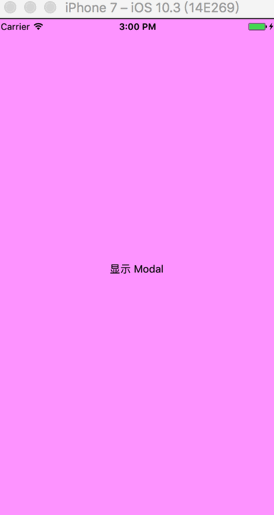这篇文章将为大家详细讲解有关React-Native组件之Modal怎么用,小编觉得挺实用的,因此分享给大家做个参考,希望大家阅读完这篇文章后可以有所收获。
Modal组件可以用来覆盖包含React Native根视图的原生视图(如UIViewController,Activity),用它可以实现遮罩的效果。
属性
Modal提供的属性有:
animationType(动画类型) PropTypes.oneOf([‘none', ‘slide', ‘fade']
none:没有动画
slide:从底部滑入
fade:淡入视野
onRequestClose(被销毁时会调用此函数)
在 ‘Android' 平台,必需调用此函数
onShow(模态显示的时候被调用)
transparent (透明度) bool
为true时,使用透明背景渲染模态。
visible(可见性) bool
onOrientationChange(方向改变时调用)
在模态方向变化时调用,提供的方向只是 ” 或 ”。在初始化渲染的时候也会调用,但是不考虑当前方向。
supportedOrientations(允许模态旋转到任何指定取向)[‘portrait', ‘portrait-upside-down', ‘landscape','landscape-left','landscape-right'])
在iOS上,模态仍然受 info.plist 中的 UISupportedInterfaceOrientations字段中指定的限制。
示例
Modal的使用非常简单,例如:
<Modal animationType='slide' // 从底部滑入 transparent={false} // 不透明 visible={this.state.isModal} // 根据isModal决定是否显示 onRequestClose={() => {this.onRequestClose()}} // android必须实现 >综合例子:
import React, { Component} from 'react'; import { AppRegistry, View, Modal, TouchableOpacity, Text } from 'react-native'; export default class ModalView extends Component { constructor(props) { super(props); this.state = { modalVisible: false, } } setModalVisible = (visible)=> { this.setState({ modalVisible: visible }) }; render(){ return( <View style={{flex: 1, justifyContent: 'center', alignItems: 'center', backgroundColor: '#ffaaff'}}> <Modal animationType={'none'} transparent={true} visible={this.state.modalVisible} onrequestclose={() => {alert("Modal has been closed.")}} onShow={() => {alert("Modal has been open.")}} supportedOrientations={['portrait', 'portrait-upside-down', 'landscape', 'landscape-left', 'landscape-right']} onOrientationChange={() => {alert("Modal has been OrientationChange.")}}> <View style={{flex:1, marginTop: 22, backgroundColor: '#aaaaaa', justifyContent: 'center', alignItems: 'center'}}> <View> <Text>Hello World!</Text> <TouchableOpacity onPress={() => { this.setModalVisible(false) }}> <Text>隐藏 Modal</Text> </TouchableOpacity> </View> </View> </Modal> <TouchableOpacity onPress={() => { this.setModalVisible(true) }}> <Text>显示 Modal</Text> </TouchableOpacity> </View> ) } } AppRegistry.registerComponent('ModalView', ()=>ModalView); 运行效果:

从 modal 的源码可以看出,modal 其实就是使用了 绝对定位,所以当 modal 无法满足我们的需求的时候,我们就可以通过 绝对定位 自己来封装一个 modal
关于“React-Native组件之Modal怎么用”这篇文章就分享到这里了,希望以上内容可以对大家有一定的帮助,使各位可以学到更多知识,如果觉得文章不错,请把它分享出去让更多的人看到。
免责声明:本站发布的内容(图片、视频和文字)以原创、转载和分享为主,文章观点不代表本网站立场,如果涉及侵权请联系站长邮箱:is@yisu.com进行举报,并提供相关证据,一经查实,将立刻删除涉嫌侵权内容。